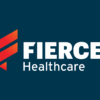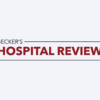COVID-19 has created a public health crisis unlike anything most of us have ever seen. In addition to the devastating toll on human life, it has led to an economic recession that has further exacerbated health risks, pulling many into a vicious cycle of health and financial challenges. This compounding effect means industry stakeholders—from payers to employers to providers to health IT companies—have to act now, and proactive care is more important than ever.
At Sage, we have the privilege of working with two partner organizations that recently released data exploring the impact of the COVID-19 pandemic on Americans, from both a health and financial perspective. Their findings reveal where some of the nation’s biggest health challenges lie, and what can be done as we move forward.
EFFECTS ON PATIENT HEALTH AND LIVELIHOOD
One of the biggest areas of concern arising from these joint crises is increased deferred care. Fear of contracting COVID-19 from a healthcare setting combined with economic hardships has significantly decreased care utilization. Prealize Health, a predictive analytics company helping health plans, providers, and employers transform healthcare from reactive to proactive, recently found that there was an approximate 50% drop in procedures and diagnoses early in the pandemic, between March 2020 and June 2020. This decline in healthcare utilization has likely continued, and, as we pass the one-year mark since the beginning of the pandemic, we should expect to start seeing the effects.
Fear of COVID-19 aside, financial challenges have also played a large role in care deferrals. Immediate, a financial wellness company working to eliminate cycles of debt by providing employees early access to earned pay, recently released a report noting that most Americans can’t pay an unexpected expense over $400. Their survey of 1,250 employees also revealed that over a quarter of individuals would delay medical care if they faced an unexpected medical cost.
The consequences of deferred care are dire; not accessing necessary care greatly increases the risk of advanced conditions, which have worse outcomes and higher costs. Based on a claims analysis of 600,000 patients, Prealize predicts significant increases in cardiac diagnoses, cancer, and fractures this year due to deferred care in 2020.
“The pandemic has created a financial crisis that can worsen health issues already growing due to the virus’ spread.”
Matt Pierce, Founder and Chief Executive Officer at Immediate
ESCALATING MENTAL HEALTH CONDITIONS
The pandemic and ensuing financial crisis have also deteriorated mental health — in fact, an estimated one in three Americans may need to seek behavioral health care in 2021 as a result of the pandemic. Stress related to the pandemic is a likely driver, but financial stressors also play a role. Immediate’s survey found that 80% of individuals feel that financial struggles impact their mental health—especially noteworthy in a time of economic recession. Poor mental health not only has implications for quality of life and increased healthcare costs, but also affects physical health.
Healthcare workers have been especially burdened by poor mental health due to the pandemic and financial struggles. It is well-documented that poor well-being among healthcare workers is associated with worse patient safety. Troublingly, Immediate’s survey found that 62% and 71% of healthcare respondents said that financial stress has affected their physical and mental health, respectively, and over half of the healthcare workers surveyed said that financial stress impacts their attention at work. This is especially alarming during a pandemic, when we are more reliant on our healthcare workers than ever.
TRICKLE DOWN EFFECTS
Fluctuating care utilization and financial hardship impact not just patients, but also healthcare spending. The CDC estimates that employee health issues cost employers $225.8 billion annually due to lost productivity and increased medical costs – this is only expected to increase in a COVID-19 age.
And, while payers experienced a profitable year due to the drop in non-emergency medical care, a tumultuous 2020 has made risk forecasting difficult as payers prepare for the future, especially as patients return to make up for care. Increased unemployment and evolving needs are also expected to create more churn for payers, as members shift benefits and plans.
“Payers must take a proactive approach to patient care, especially as we see increasing numbers of patients deferring care and increasing their health risks.”
Linda Hand, CEO of Prealize Health
MITIGATING RISKS WITH PROACTIVE CARE
If we act fast, it is possible to mitigate these risks to patients and the industry. Employers and payers are in a unique position where they can play a role in proactively addressing their members’ health risks.
There are signs of positive momentum on the employer front. In a study conducted by Sage Growth Partners of 230 employers, controlling medical and pharmacy spend and improving employee wellness ranked in top motivators in choosing employee health benefits. Wellness and chronic condition management tools can help patients as they shy away from care, and financial empowerment can increase access to timely care.
“The pandemic has created a financial crisis that can worsen health issues already growing due to the virus’ spread,” says Matt Pierce, Founder and Chief Executive Officer at Immediate. “By proactively enabling employees with tools to more easily and economically access care, employers can pull their employees out of this cycle before it’s too late.”
Payers too can shape their programs to not only better address the rising consequences of the pandemic, but also better position their offerings in the future. Risk forecasting and targeting tools can help them better identify who needs care the most, and member engagement tools can help support those at greatest risk. Increased coverage of telehealth and behavioral health treatment will also be fundamental during this time.
“Payers must take a proactive approach to patient care, especially as we see increasing numbers of patients deferring care and increasing their health risks,” says Linda Hand, CEO of Prealize Health. “This will lead to better outcomes for patients and to payer success.”
On the health IT front, patient engagement tools and telemedicine will grow even more necessary as employers and payers look for ways to help their employees and members before their conditions worsen. To target financial concerns, cost management tools and expanded covered services can help patients afford care during a time when there is a greater financial burden associated with going to the doctor.
While increasing vaccine rollouts offers hope for the future, we are not out of the woods yet. Mental health conditions are on the rise, people are still deferring care, and many are facing extreme financial challenges. It is time to act proactively rather than wait to treat patients until they come back to the healthcare system with progressed conditions. By providing solutions now, we can all return to normalcy faster, together.
LEARN MORE ABOUT THE EFFECTS ON HEALTH AND BENEFITS OF PROACTIVE CARE IN THESE REPORTS:







